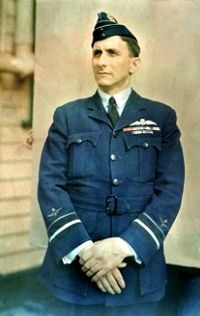George Jones | |
|---|---|
 Air Vice-Marshal George Jones, 1942 | |
| Nickname(s) | "Jonah"; "Yellow Jones" |
| Born | 18 October 1896 Rushworth, Victoria |
| Died | 24 August 1992 (aged 95) Melbourne, Victoria |
| Allegiance | Australia |
| Service/branch | Royal Australian Air Force |
| Service years | 1912–52 |
| Rank | Air marshal |
| Unit | No. 4 Squadron AFC (1918–19) |
| Commands |
|
| Battles / wars |
|
| Awards | |
| Other work | Director of Coordination, Commonwealth Aircraft Corporation (1952–57) |
Air Marshal Sir George Jones, KBE, CB, DFC (18 October 1896 – 24 August 1992) was a senior commander in the Royal Australian Air Force (RAAF). He rose from private soldier in World War I to air marshal in 1948, and served as Chief of the Air Staff from 1942 to 1952, the longest continuous tenure of any RAAF chief. Jones was a surprise appointee to the Air Force's top role, and his achievements in the position were coloured by a divisive relationship during World War II with his nominal subordinate, the head of RAAF Command, Air Vice-Marshal William Bostock.
During World War I, Jones saw action as an infantryman in the Gallipoli Campaign of 1915, transferring to the Australian Flying Corps a year later. Originally a mechanic, he undertook flying training in 1917 and was posted to a fighter squadron in France. He achieved seven victories to become an ace, and was awarded the Distinguished Flying Cross. After a short spell in civilian life following World War I, he joined the newly formed RAAF in 1921, and rose steadily through training and personnel commands prior to World War II.
Jones did not actively seek the position of Chief of the Air Staff before being appointed in 1942, and his conflict with Bostock—with whom he had been friends for 20 years—was partly the result of a divided command structure, which neither man had any direct role in shaping. After World War II, Jones had overall responsibility for transforming what was then the world's fourth largest air force into a peacetime service that was also able to meet overseas commitments in Malaya and Korea. Following his retirement from the RAAF, he continued to serve in the aircraft industry and later ran unsuccessfully for political office. He was knighted in 1953.